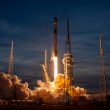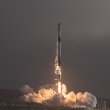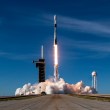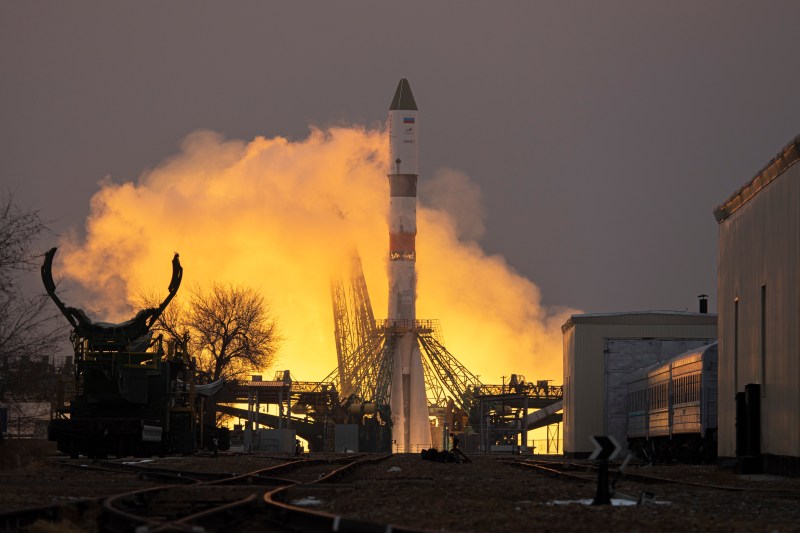Featured image credit: ROSCOSMOS
Lift Off Time | June 29, 2021 – 23:27 UTC June 30, 2021 – 02:27 MSK |
|---|---|
Mission Name | Progress MS-17 (78P), a resupply mission to the International Space Station (ISS) |
Launch Provider | ROSCOSMOS |
Customer | ROSCOSMOS |
Rocket | Soyuz 2.1a |
Launch Location | Launch Complex 31/6, Baikonur Cosmodrome, Kazakhstan |
Payload mass | ~2,900 kg (6,400 Ib) of cargo |
Where is the spacecraft going? | It will rendezvous with the ISS, ~400 km low Earth orbit (LEO) at a 51.65° inclination |
Will they be attempting to recover the first stage? | No, this is not a capability of Soyuz |
Where will the first stage land? | The boosters will crash into the steppes of Kazakhstan |
Will they be attempting to recover the fairings? | No, this is not a capability of Soyuz |
Are these fairings new? | Yes |
How’s the weather looking? | TBD |
This will be the: | – 4th uncrewed mission to the ISS of 2021 – 17th launch of a Progress MS spacecraft – 54th mission of Soyuz 2.1a rocket – 78th cargo delivery to the ISS – 169th flight of a Progress spacecraft – 59th orbital launch attempt of 2021 |
Where to watch | Official livestream |
What does all this mean?
Progress MS-17 (78P) is a cargo resupply mission that will be heading to the International Space Station (ISS). ROSCOSMOS will launch it using an uncrewed Progress MS spacecraft atop a Soyuz 2.1a launch vehicle. The rocket will lift off from Launch Complex 31/6, at the Baikonur Cosmodrome in Kazakhstan. This mission will mark the 17th flight of the Progress MS capsule and the 78th cargo delivery to the space station.
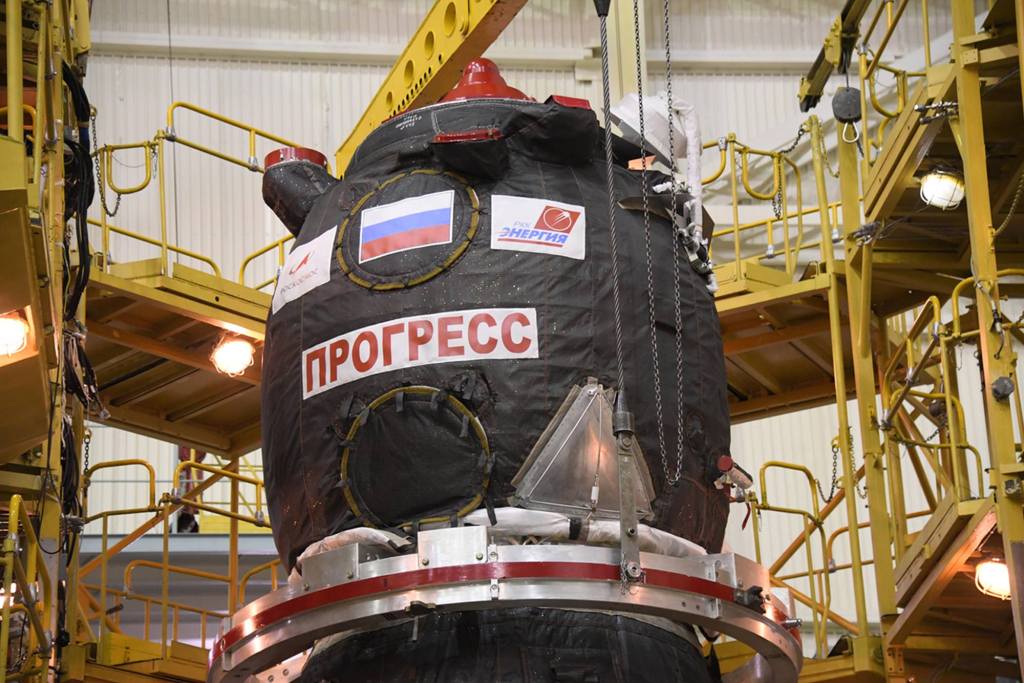
Progress MS-17 (78P)
Payload
Initially, the mission was planned to launch on March 29, 2021, but was postponed for one month. Due to this fact, the delivery plan to the ISS was reshuffled and some of the equipment needed for experiments was delivered ahead of schedule on the Progress MS-16 mission.
Progress MS-17 will carry propellant and pressurized gases with a total mass of 1,390 kg, as well as food, 420 liters of water for the Rodnik system, and other cargo and equipment with a total mass of 1,509 kg. Overall, this mission will bring approximately 2,899 kg of cargo to the ISS.
The Prichal Node Module
In addition to the cargo delivery for the crew, the Progress MS-17 has another very important task that will be performed at the very end of its mission. The capsule will prepare the ISS for a warm welcoming to the new Russian nodal module Prichal (the Russian word for “pier”). This module is scheduled to launch atop a Soyuz 2.1b rocket on November 24, 2021.
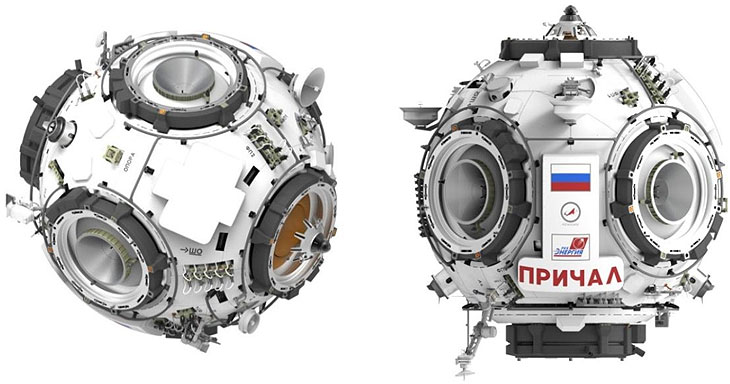
Prichal is supposed to dock to the Nauka (the Russian word for “science”) research module, which has yet to launch and dock to the ISS this July. The strategic aim of Progress MS-17 will be to remove an adapter from the Nauka module by undocking it along with itself from the ISS. While this adaptor is designed for docking both Soyuz spacecraft and Progress capsule, the new Prichal module will use another type of docking port. That is why it is necessary to remove this adaptor. Otherwise, it would interfere with the docking of Prichal.
Prichal is equipped with six docking ports, one of which will be used to dock to Nauka. The other five will be available for rendezvous with the Soyuz spacecrafts and Progress capsules, as well as with other new modules.
Progress MS-17 Mission Profile
Progress MS will separate from the third stage of the Soyuz 2.1a at ~9 min after launch. The capsule is scheduled to arrive at the ISS on Friday, July 2, around 01:00 UTC (04:00 MSK). The Progress MS capsule will autonomously dock to the Poisk module (Poisk is the Russian word for “explore”). It is used as a research facility, as well as a docking compartment for both Soyuz spacecraft and Progress capsule.
Progress MS-17 will spend around 5 months at the ISS. It will stay docked to the Poisk module for 4 months. At the end of October, it will dock to the Nauka module. If everything goes according to plan, its mission will end on November 24, 2021. It will leave the ISS with the said adapter and perform a deorbit burn to reenter Earth’s atmosphere to burn up over the South Pacific Ocean.
Approximate Timeline
| Hrs:Min:Sec From Lift-Off | Events |
| – 00:00:15 | Engine start sequence |
| 00:00:00 | Lift-Off |
| + 00:01:58 | First stage separation |
| + 00:03:03 | Fairing jettison |
| + 00:04:47 | Second stage separation |
| + 00:04:57 | Tail section separation |
| + 00:08:45 | Third stage main engine cutoff |
| + 00:08:49 | Progress MS separation |
What is Soyuz 2.1a?
ROSCOSMOS’s Soyuz is a multi-use medium-lift launch vehicle that was introduced in far 1966 and since then has been the workhorse of the Soviet/Russian space program. It is capable to launch civilian and military satellites, as well as cargo and crewed missions to the ISS. Over the decades, several variants of the Soyuz rocket have been developed. Soyuz 2.1a is one of its latest iterations that belongs to the Soyuz-2 rocket family.
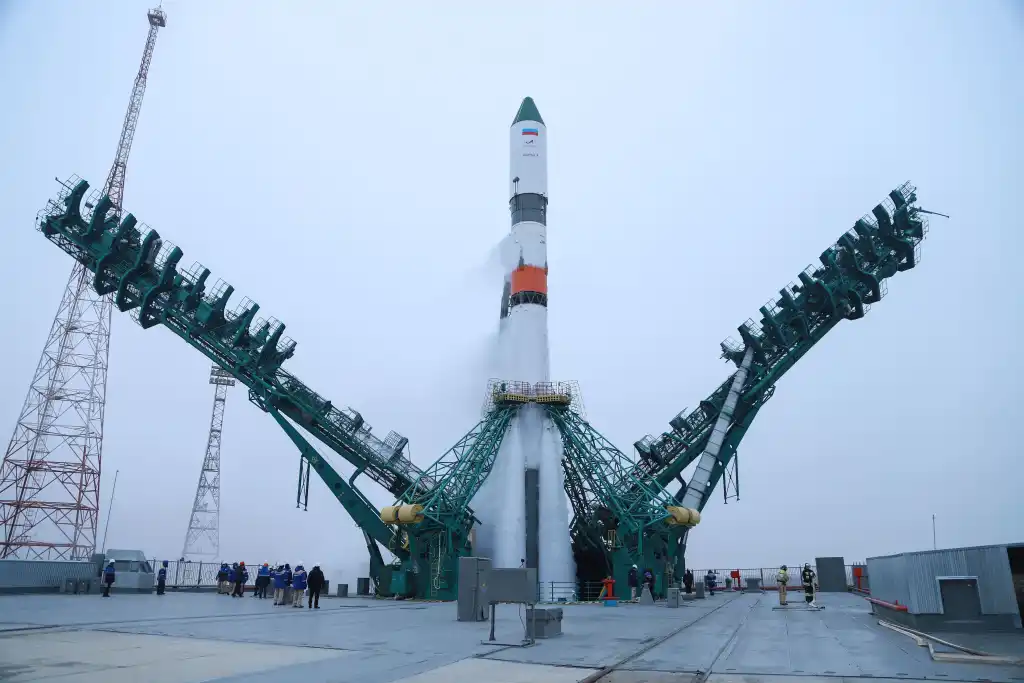
The rocket consists of three stages, all of them are expendable. When launching to the ISS, Soyuz-2 can be flown with either a Progress capsule or a Soyuz spacecraft. On the Progress MS-17 mission, the Progress MS module will be used to deliver cargo to the ISS.
Soyuz 2.1a is about 46.3 meters (152 ft) in height and 2.95 meters (9 feet) in diameter. The vehicle’s total lift-off mass is approximately 312,000 kg (688,000 lb). The rocket’s payload lift capacity to low-Earth orbit (LEO) is between 6,600 and 7,400 kg depending on the launch site.
Stages
| First Stage | Second Stage | Third Stage | |
| Engine | 4 RD-107A | RD-108A | RD-0110 |
| Total Thrust | 840 kN (188,720 lbf), sea level 1,020 kN (229,290 lbf), vacuum | 792 kN (178,140 lbf), sea level 922 kN (207,240 lbf), vacuum | 298 kN (67,000 lbf), vacuum |
| Specific Impulse (ISP) | 263 s, sea level 320 s, vacuum | 258 s, sea level 321 s, vacuum | 326 s, vacuum |
Side Boosters
The first stage of the Soyuz 2.1a rocket is composed of 4 side boosters that are powered by RD-107A engines. Each one of the boosters has a conical shape and a dry weight of 3,784 kg. It is approximately 19.6 meters in length, with a diameter of 2.7 meters. Each side booster has two vernier thrusters that are used for flight control.
The RD-107A engine runs on rocket-grade kerosene (RP-1) and liquid oxygen (LOx). The propellants are stored in the pressurized aluminum alloy tanks, the kerosine tank is located in the cylindrical part of the booster, and the LOx one is in the conical section. Each one of those engines has 4 combustion chambers and together they are capable of producing a thrust of 840 kN at sea level and 1,020 kN in a vacuum.
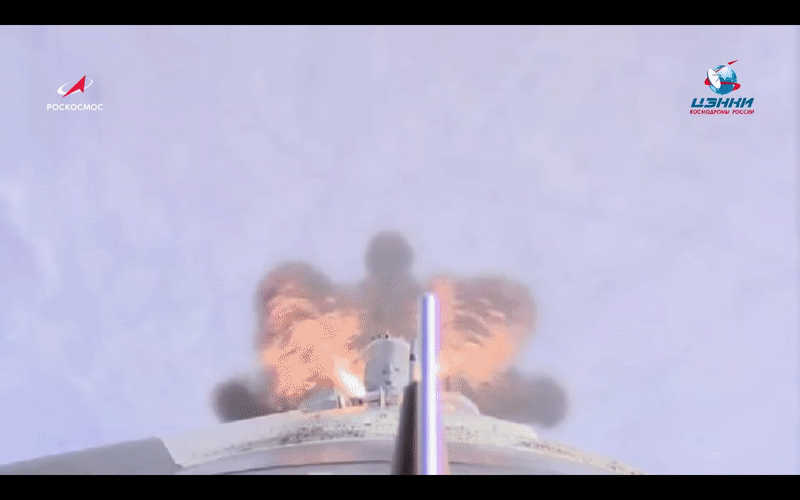
Perhaps, the most spectacular moment of the Soyuz-2 rocket’s launch is the separation of the first stage. It happens approximately 2 minutes after the launch. The boosters perform a pattern, known as the “Korolev cross” (named after Sergei Korolev, a very important figure of the USSR space program and history).
Second and Third Stages
The center core stage is powered by a single RD-108A engine, and the upper stage is fitted with a single RD-0110 engine. Both of these engines run on rocket-grade kerosene and LOx and have 4 combustion chambers. The second stage is 27.10 meters long, with a diameter of 2.95 meters, and a dry mass of 6,545 kg. It has 4 vernier thrusters for three-axis flight control.
The third stage of a Soyuz-2 rocket has a height of 6.7 meters, a diameter of 2.7 meters, and a dry mass of 2,355 kg. One interesting thing about the engine on this stage is that it starts its ignition sequence prior to stage separation. This process is called “hot fire staging”.
Progress MS Spacecraft
The Progress module is a space “truck” for delivering cargo to the ISS. Its design is largely derived from the Soyuz spacecraft that serves for the transportation of astronauts to the ISS. The Progress capsule is 7.9 meters in length and 2.7 meters in diameter. It consists of three parts: a pressurized cargo module, a propellant compartment, and a rear service module (like the Soyuz spacecraft).
Unlike Cargo Dragon 2, it is not designed to bring cargo back to Earth. This is because the three modules on Progress are not capable to split before re-entry. Therefore, after unloading the cargo, the crew progressively fills it only with trash. At the end of its mission, the spaceship separates from the ISS, performs a deorbit burn, and entirely burns up upon re-entry in Earth’s atmosphere.
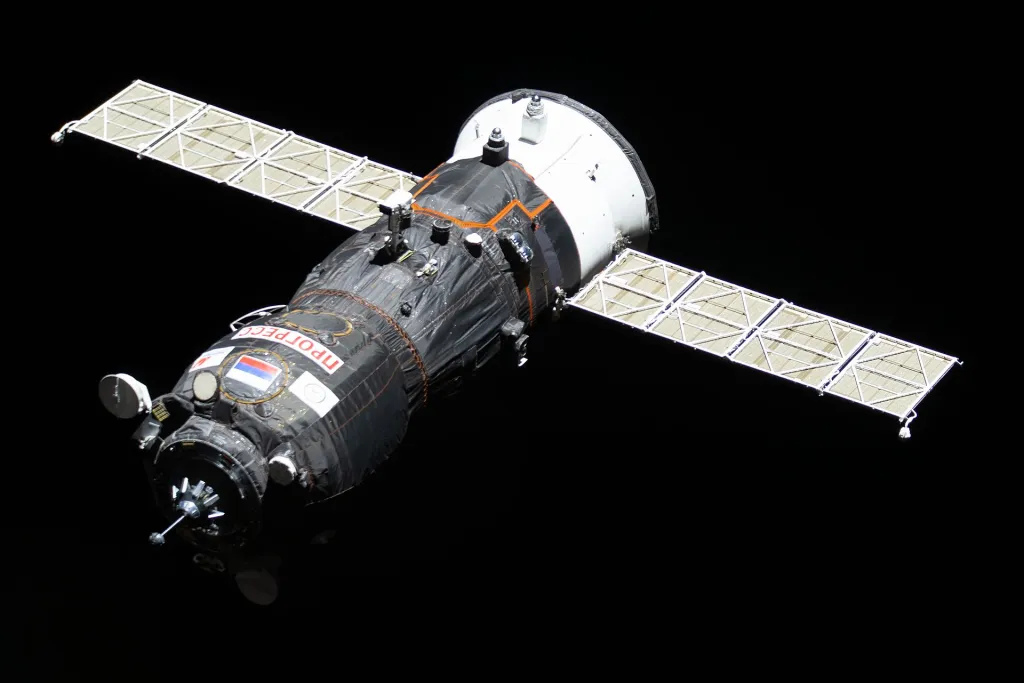
The MS series is the latest modernized variation of the Progress spacecraft that began flying in December 2015. Among the introduced upgrades are improved orbital debris shielding, a new flight-control and navigation systems, as well as a new external compartment that can be used for satellite deployment.
Kurs-NA Automatic Docking System
Like the Soyuz spacecraft, Progress MS is equipped with a Kurs-NA automatic docking system that was first tested on the Progress M-15M mission in July 2012. Compared to its ancestor, Kurs-A, the new system has only one AO-753A rendezvous antenna. Kurs-A had five (two 2AO-VKA and three AKR-VKA) of them. This antenna broadcasts radar pulses that are needed to determine the altitude and relative position of the spacecraft to the ISS. Moreover, Kurs-NA uses less power than Kurs-A.
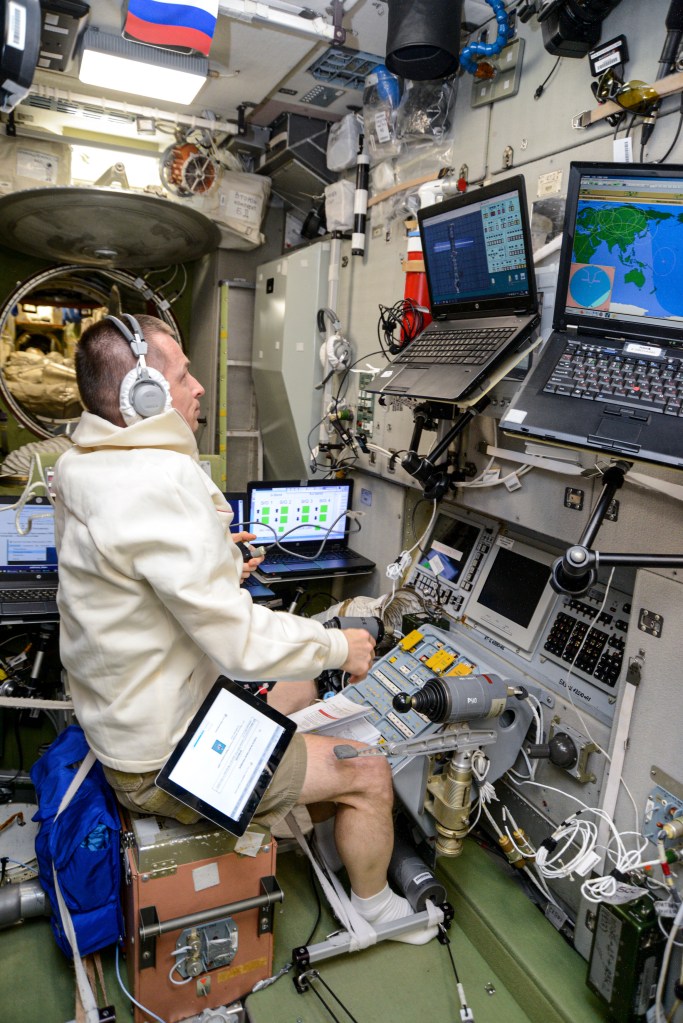
In addition, the Progress MS spacecraft can be docked to the ISS manually by the docking system called the Tele-Robotically Operated Rendevous unit (TORU). This manual system serves as a backup to Kurs-NA in emergency situations and is located inside the Zvezda service module. On the last Progress MS-16 mission, the control of the capsule had to be switched over to the TORU due to a signal strength issue of the Kurs system.
Overall, the Progress MS-17 mission’s success criteria will be successful deployment of the Progress MS-17, its docking to the ISS, and undocking along with the Nauka’s adapter in November 2021.

